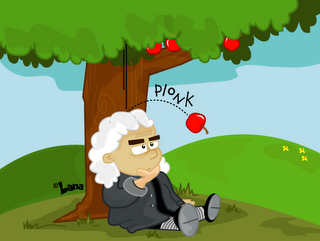During the great plague Isaac Newton maintain private studies at his home in Woolsthorpe and made great contributions to science in infinitesimal calculus, building the foundations for his theory of light and color and achieving significant insight into the problem of planetary motion. In April 1667, Newton returned to Cambridge and was elected a minor fellow at Trinity becoming a senior fellow after taking his Master of Arts degree in 1669. Before he had reached his 27th birthday, he already was Professor of Mathematics in Cambridge.
From 1670 to 1672, Newton investigated the refraction of light, demonstrating that a prism could decompose white light into a spectrum of many colours and that a lens and a second prism could recompose those colours spectrum into white light.
Since 1679, he centered his studies on celestial mechanics, investigating gravitation and its effect on the orbits of planets. He published his book “The Principia” on 5 July of 1687, which contains the description of the three universal laws of motion. For the concept of gravity, he used the Latin word “gravitas”, which means weight, and defined the law of universal gravitation.
By: Gonçalo Pereira







